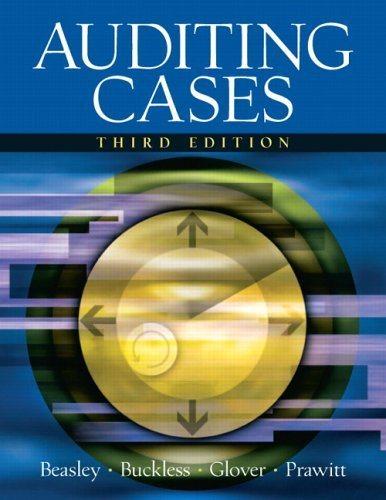



Bravo Wholesalers, Inc., began its business on January 1, 20X1. Information on its inventory purchases and sales during 20Xl follows: Table Summary: Row 1 is a header and spans columns 2 through 4. Row 10 contains no data in column 3 . Row 11 is a header and spans columns 2 through 4. Row 16 contains no data in column 3 . 1. Compute the cost of ending inventory and cost of goods sold under each of the following methods: (a) FIFO, (b) weighted average cost, and (c) LIFO. Assume that Bravo uses the periodic inventory method. 2. Assume that Bravo uses the periodic LIFO method. a. Calculate the replacement cost of the ending inventory and the LIFO reserve as of year-end. You may assume that year-end purchase cost was still $6.10 per unit. b. Estimate Bravo's cost of goods sold under the periodic FIFO method based only on the information that will be publicly available to Bravo's investors. Explain why your answer differs from FIFO cost of goods sold computed in requirement 1. c. Bravo's purchasing manager was planning to acquire 10,000 units of inventory on January 5 , 20X2, at $6.10 per unit. Its accountant suggests that the company will be better off if it acquires the inventory instead on December 31,20XI. What are the pros and cons of the accountant's suggestion? Wherever possible, show supporting calculations. 3. Calculate the cost of goods sold assuming that Bravo uses (a) the perpetual FIFO method; (b) the perpetual weighted average method. P10-3 Determining cost of sales under difierent flow assumptions comprehensive This spreadsheet consists of: 1) Calculation of costs for requirement 1 (beginning line 9) 2) Cost flow template for requirement 3 (beginning line 22) Requirement 1: \begin{tabular}{c|c|c} Cost & CostofEndingInventory & CostofGoodsSold \\ \hline Method & & \\ \hline FIFO & & \\ \hline \end{tabular} Weighted Average LIFO Requirement 3 a: Cost of Goods Sold under Perpetual FIFO September 2 December 5 December 5 Requirement 3 b: Cost of Goods Sold under Perpetual Weighted Average \begin{tabular}{|c|c|c|c|} \hline Date of Sale & Quantity & Unit cost & Total Cost \\ \hline 1/1 Purchase & & \\ \hline 3/3 Sale & & \\ \hline \end{tabular} Inventory@3/3 3/10 Purchase 4/15 Purchase 9/2 Sale 9/11 Purchase 11/12 Purchase 12/1 Purchase Inventory @12/5 12/5 Sale Inventory @12/5 12/29 Purchase 12/31 Inventory Bravo Wholesalers, Inc., began its business on January 1, 20X1. Information on its inventory purchases and sales during 20Xl follows: Table Summary: Row 1 is a header and spans columns 2 through 4. Row 10 contains no data in column 3 . Row 11 is a header and spans columns 2 through 4. Row 16 contains no data in column 3 . 1. Compute the cost of ending inventory and cost of goods sold under each of the following methods: (a) FIFO, (b) weighted average cost, and (c) LIFO. Assume that Bravo uses the periodic inventory method. 2. Assume that Bravo uses the periodic LIFO method. a. Calculate the replacement cost of the ending inventory and the LIFO reserve as of year-end. You may assume that year-end purchase cost was still $6.10 per unit. b. Estimate Bravo's cost of goods sold under the periodic FIFO method based only on the information that will be publicly available to Bravo's investors. Explain why your answer differs from FIFO cost of goods sold computed in requirement 1. c. Bravo's purchasing manager was planning to acquire 10,000 units of inventory on January 5 , 20X2, at $6.10 per unit. Its accountant suggests that the company will be better off if it acquires the inventory instead on December 31,20XI. What are the pros and cons of the accountant's suggestion? Wherever possible, show supporting calculations. 3. Calculate the cost of goods sold assuming that Bravo uses (a) the perpetual FIFO method; (b) the perpetual weighted average method. P10-3 Determining cost of sales under difierent flow assumptions comprehensive This spreadsheet consists of: 1) Calculation of costs for requirement 1 (beginning line 9) 2) Cost flow template for requirement 3 (beginning line 22) Requirement 1: \begin{tabular}{c|c|c} Cost & CostofEndingInventory & CostofGoodsSold \\ \hline Method & & \\ \hline FIFO & & \\ \hline \end{tabular} Weighted Average LIFO Requirement 3 a: Cost of Goods Sold under Perpetual FIFO September 2 December 5 December 5 Requirement 3 b: Cost of Goods Sold under Perpetual Weighted Average \begin{tabular}{|c|c|c|c|} \hline Date of Sale & Quantity & Unit cost & Total Cost \\ \hline 1/1 Purchase & & \\ \hline 3/3 Sale & & \\ \hline \end{tabular} Inventory@3/3 3/10 Purchase 4/15 Purchase 9/2 Sale 9/11 Purchase 11/12 Purchase 12/1 Purchase Inventory @12/5 12/5 Sale Inventory @12/5 12/29 Purchase 12/31 Inventory










